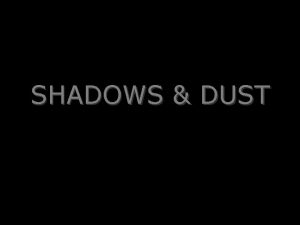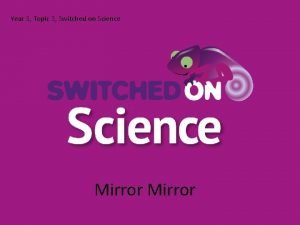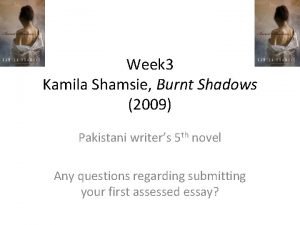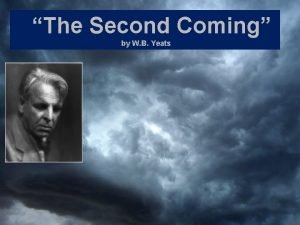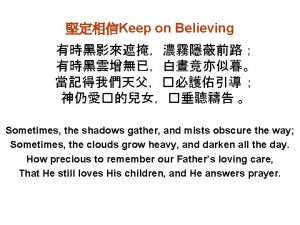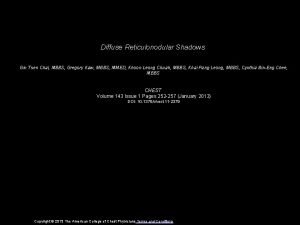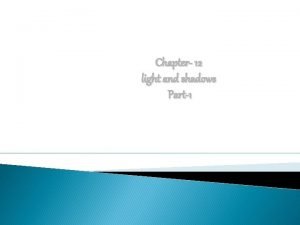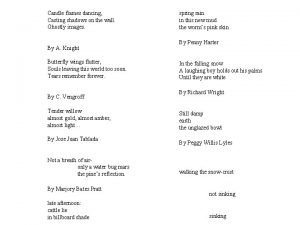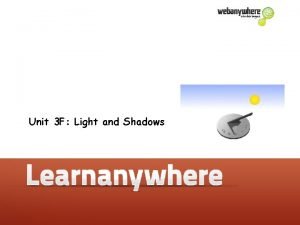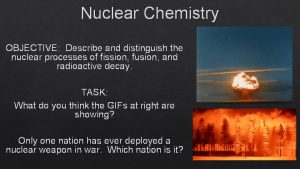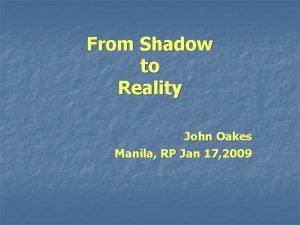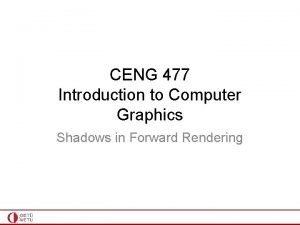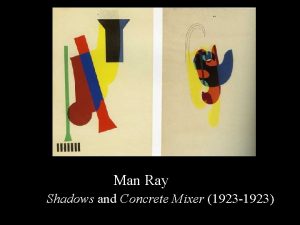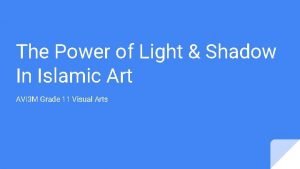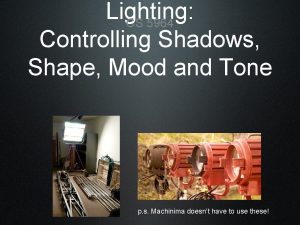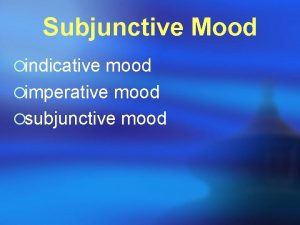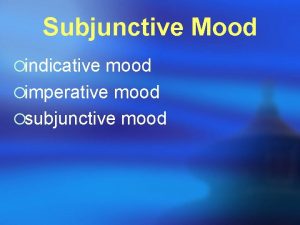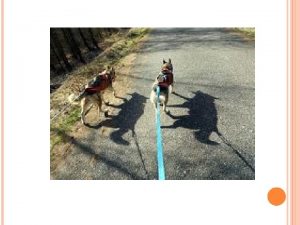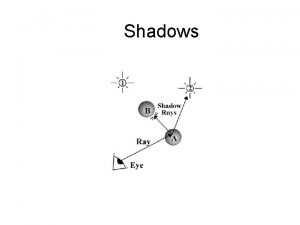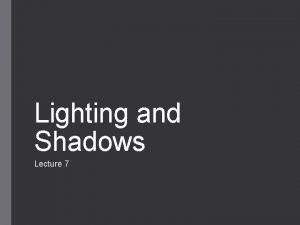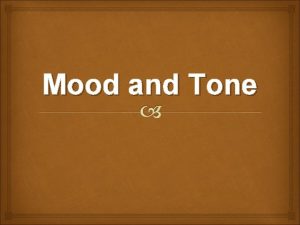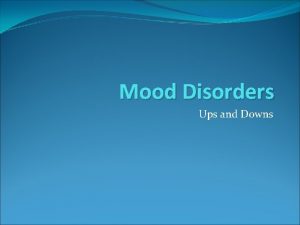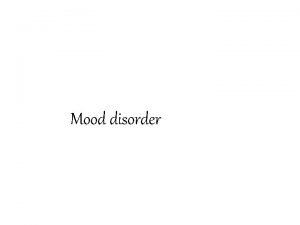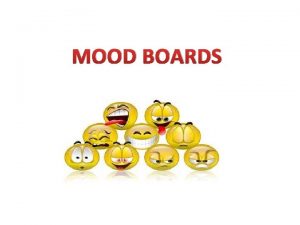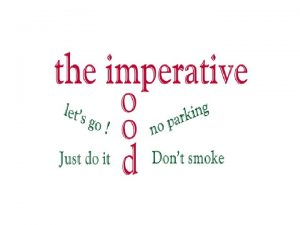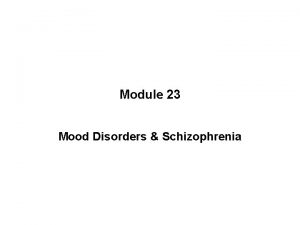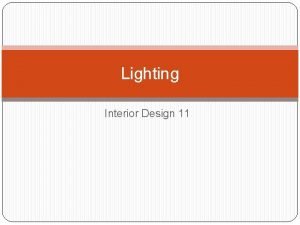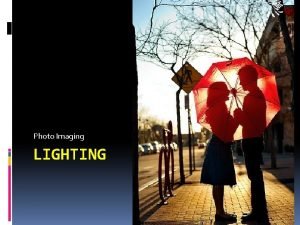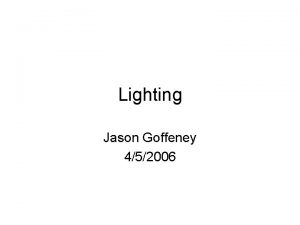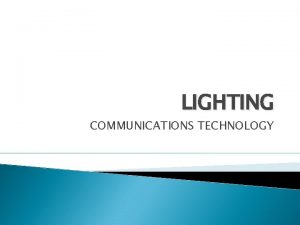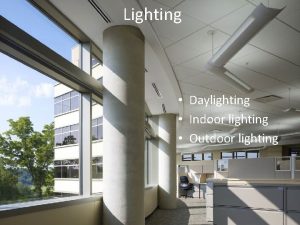CS 5964 Lighting Controlling Shadows Shape Mood and





















- Slides: 21

CS 5964 Lighting: Controlling Shadows, Shape, Mood and Tone p. s. Machinima doesn’t have to use these!

“GTA Coca-cola ad” Color shift?

PHILOSOPHY • Light affects everything • Changes mood • Seasonal effective disorder • Film noir vs. Wizard of Oz • Fluorescent lights in Joe vs. Volcano • Mix of art and science • Use technique and aesthetics to support theme

2 PHILOSOPHIES 1. ) IMITATE LIFE • Aims for realism • Where is the existing light? Attribution? Motivation? 2. ) INTENSIFY EXPERIENCE • More expressionistic • What’s the emotional tone? Temperature? Mood?

MOTIVATION • Motivation is often what separates student films from professional films-how did that light get there? • Practicals--light provided within the frame, such as a lamp • The sun and its light derivatives are major motivators

CHARACTERISTICS 1. ) INTENSITY • Measures the brightness of the shot • Saturation measures brightness of a color

CHARACTERISTICS 2. ) QUALITY • Is the lighting harsh, or soft • Hard vs. soft, full sun vs. Softer light cloudy, direct vs. diffusion • Size--smaller is harder (think sun), larger is softer (think clouds) Harder light

CHARACTERISTICS 3. ) CONTRAST • Gauges the levels of brightness within the frame between the highlights and shadows

CHARACTERISTICS 4. ) DIRECTION • Where is the light coming from? What angle? • Motivation--realistic or expressionistic • Reflective • Bouncing/dampening • Shaping

CHARACTERISTICS 5. ) COLOR • Temperature--Is it a warmer or cooler color? (usually from more orange to more blue) • Neon lights, stained glass, gels Cooler tones • Psychology of color • Emotion of red, white, and blue • Cultural--”Lady in Red” Warmer tones

3 (or 4) Point Lighting • 1. ) Key--primary light source • 2. ) Fill--fills in the shadows • 3. ) Back--separates from background; 3 D quality • 4. ) Background • Real world more complex

3 (or 4) Point Lighting Key light only Fill light only Back light only Complete 3 -point light setup

HIGH vs. LOW KEY • High Key--No or few shadows; flat light; evenly lit can cause eye to wonder • Ex. TV shows--Jay Leno, Stephen Colbert-- soaps; full shade and overcast • Low Key--More shadows; more moody; light leads the eye • Ex. Film noir, Chiaroscuro, full sun

STYLES Black & White Realism Experimental Real-Expressionistic

STYLES Chiaroscuro “Jill’s Song”

STYLES Dramatic “Maintenance Man”

STYLES Realism Saturated “Ignis Solus”

STYLES Realism Desaturated “Melon 3” & Coke ad

STYLES Sepia Toned “Flying Fenix”

Lighting Effects Color key Silhouette Fog and natural elements Spectral flare

CLOSING WORDS • Light as simply as possible • Make pictures one picture at a time • Managing light is also managing shadows (don’t just eliminate them) • Let necessity drive your decisions • If all else fails. . . turn all the lights off and turn them back on one-by-one • Draw a lighting diagram
 Shape matching and object recognition using shape contexts
Shape matching and object recognition using shape contexts Shape matching and object recognition using shape contexts
Shape matching and object recognition using shape contexts Tsade rp
Tsade rp Who made
Who made Aerodynamic shape vs aerofoil shape
Aerodynamic shape vs aerofoil shape Burnt shadows analysis
Burnt shadows analysis Turning turning in the widening gyre
Turning turning in the widening gyre Shadows are _______ in the evening than they are at midday.
Shadows are _______ in the evening than they are at midday. Pymol tutorial
Pymol tutorial How are shadows formed year 3
How are shadows formed year 3 Sometimes the shadows gather lyrics
Sometimes the shadows gather lyrics Shadows gin
Shadows gin Light and shadow chapter 12
Light and shadow chapter 12 Does flames have shadows
Does flames have shadows F
F Hiroshima shadow
Hiroshima shadow The night of scorpion poem
The night of scorpion poem From shadows to reality
From shadows to reality Www.youtube.com
Www.youtube.com Shadow in computer graphics
Shadow in computer graphics Concrete mixers poem
Concrete mixers poem Shadow puppet hands
Shadow puppet hands


